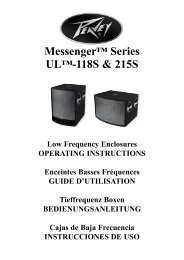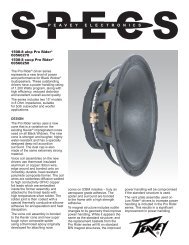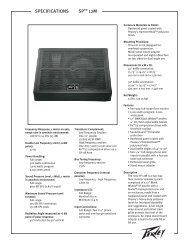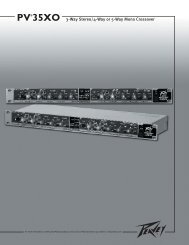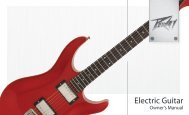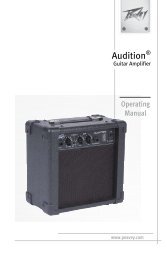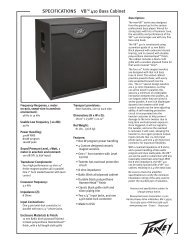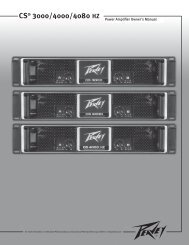tragic 4 pxd peavey
tragic 4 pxd peavey
tragic 4 pxd peavey
You also want an ePaper? Increase the reach of your titles
YUMPU automatically turns print PDFs into web optimized ePapers that Google loves.
20<br />
Neck and Truss Rod<br />
Every Peavey bass guitar features an adjustable truss rod inside the neck. Truss rods<br />
allow for adjustments in the neck to accommodate changes in string tension caused<br />
by humidity, changing string gauges, or tuning. As the backbone of your instrument,<br />
truss rod adjustments should always be performed as the first step in instrument<br />
setup. (Peavey recommends that you enlist the services of a qualified technician to<br />
make the required truss rod adjustments on your instrument. Improper adjustment<br />
may damage your neck and void your Peavey warranty.) To gain access to the truss<br />
rod, look for a 4 mm or 8 mm allen wrench adjustment screw either at the end of<br />
the neck near the body or at the opposite end near the headstock. Note that some<br />
bass guitars may require neck removal to gain access to the neck pocket truss rod.<br />
The goal of truss rod adjustment is to create the correct amount of bow in your<br />
bass guitar’s neck to facilitate optimal playability.<br />
To check the neck’s bow, hold the guitar in normal playing position and follow<br />
this procedure for the both outside strings (highest and lowest strings). Fret and<br />
hold the string at the first fret, while fretting and holding the same string with<br />
your picking hand thumb (where the neck and body meet, typically around the<br />
16th fret). Then, stretch your picking hand index finger as far as you can to fret




